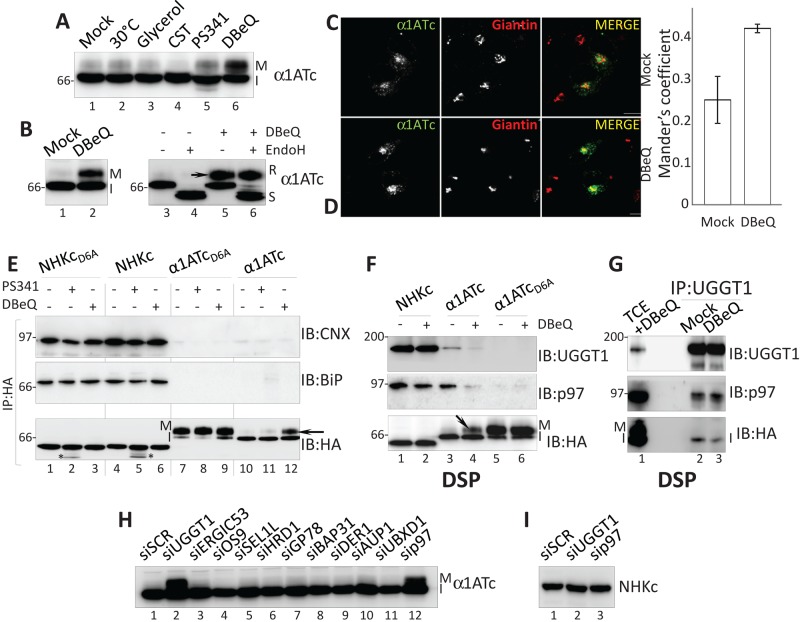FIGURE 5:
p97 and UGGT1 participate to the DBeQ-sensitive protein quality checkpoint. (A) α1ATc expressed in cells at 30°C or in cells exposed to glycerol, CST, PS341, or DBeQ. Only DBeQ allows production of the mature (M) form of α1ATc. (B) The slow-migrating α1ATc band is an EndoH-resistant form of the protein (R in lane 6). (C) Same as Figure 3H (lack of α1ATc colocalization with the Golgi marker giantin in mock-treated cells). (D) Same as C, in cells treated with DBeQ. α1ATc now colocalizes with giantin. The Manders coefficient shows the colocalization ratio between the green (α1ATc) and red channels (giantin) in mock- and DBeQ-treated cells (Bolte and Cordelieres, 2006). (E) Association of NHKcD6A, NHKc, α1ATcD6A, and α1ATc (used as baits; their amount was normalized) with CNX and BiP in mock-, PS341-, or DBeQ-treated cells. Bottom, asterisks show deglycosylated NHK chimeras accumulating upon proteasomal inhibition. (F) Same as E, in cells incubated with the chemical cross-linker DSP to stabilize weak associations (NHKc, α1ATc, and α1ATcD6A were used as bait). (G) Same as F, with UGGT1 as bait. (H) Only silencing of UGGT1 (lane 2) and p97 (lane 12) allows production of mature α1ATc. (I) Silencing of UGGT1 and p97 does not affect NHKc retention in the ER.

